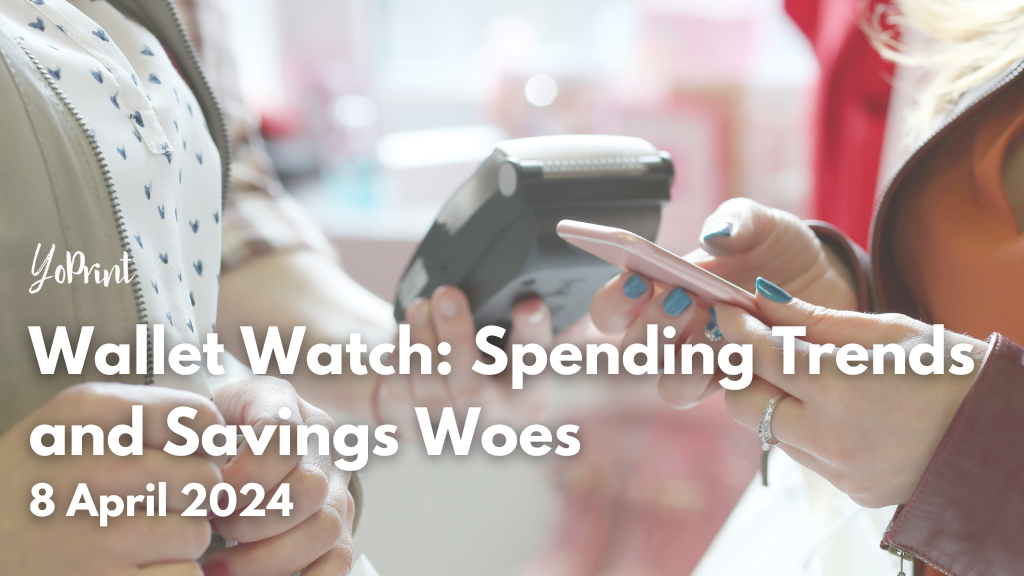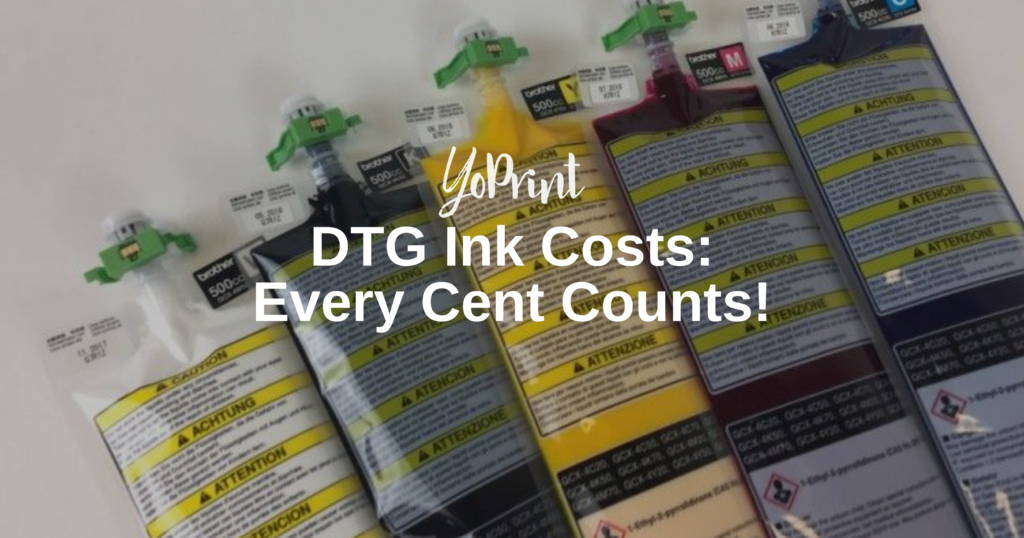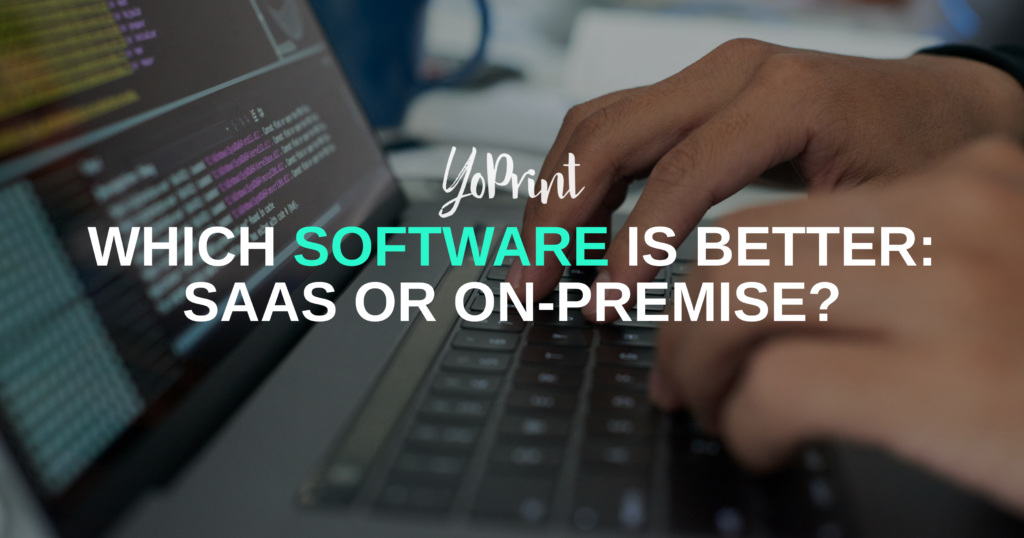In this edition of our economic watch, we delve into the latest spending trends and the challenges consumers face amidst persistent high prices and shifting economic conditions. From solid retail activity in apparel and sporting goods to the pressures on lower-end consumers and small businesses, we explore the current landscape of consumer behavior, small business sentiment, and the overarching economic environment. Let’s unpack the complexities of today’s financial climate.
KEYPOINTS:
- Consumer spending slowing down but still steady and going strong
- Lower end consumers are under pressure because prices of goods are still high
- Small businesses are not feeling so optimistic, but is there really need to worry?
- Are consumers spending their money wisely?
Steady Pace of Spending, Consumer Confidence Going Strong
Just like gum clinging on to the bottom of your shoe — sticky inflation is just as impossible to shake off, and it looks like it has nudged consumer spending downward, but fret not as the decrease is far from drastic. There’s no cause for alarm, shoppers are merely becoming more cautious, not closing their wallets entirely. Yes you read that right, people are still willing to shop, only a little bit more vigilantly.
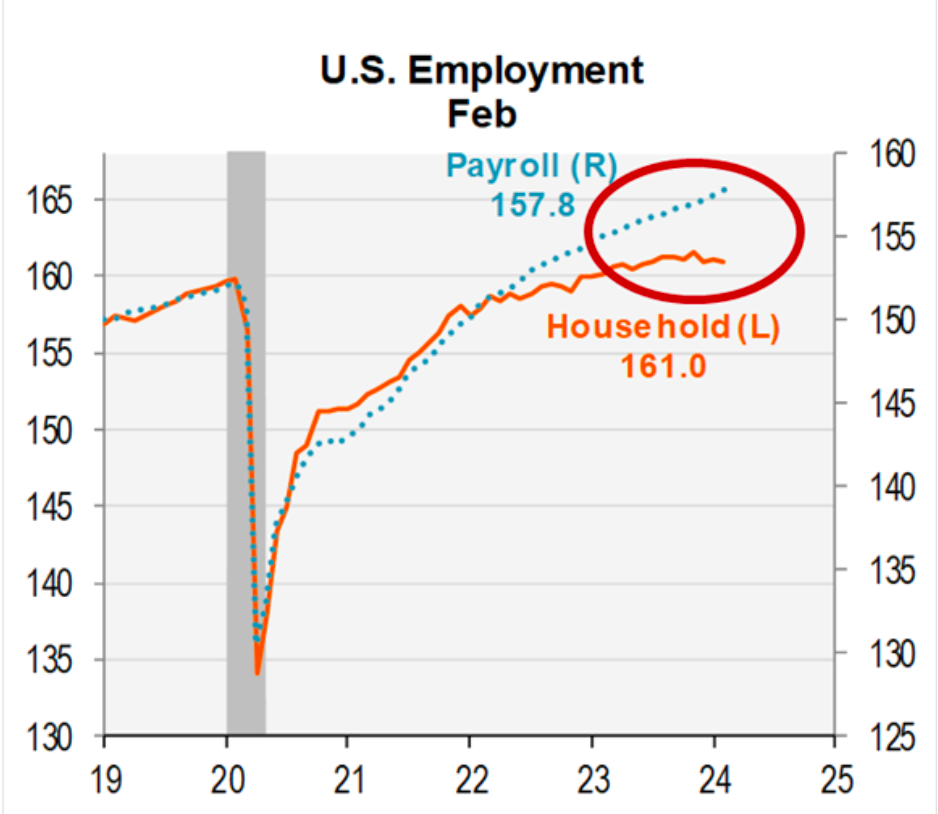
Even though the job market isn’t as strong as before, unemployment is relatively low. Which means the economy is quite strong. Its a simple hypothesis, when people have stable income, their spending confidence will be good. Let’s take a look at what consumers have been dipping their cash in.

Does it look like a bad economy downturn is coming in? We certainly don’t think so. People are eating out and also travelling, which directly translates to a solid and optimistic market.
There are some potential recession fears, where job security might be an issue and lead households to prioritize saving over spending, especially on big-ticket items like furniture and home renovation projects.
Or, it might just be a shift in priorities. After significant spending on home improvements during the pandemic, when at that time, many people were spending more time at home, consumers may now be reallocating their discretionary income towards experiences like travel and dining out, rather than home goods.
But if there’s one thing all this tells you, is that economy is still doing good, strong and steady. There’s really nothing to worry about. At least for now.
Especially since the job market in the United States is currently onshoring, meaning that jobs and business operations are being brought back in. There’s a marketing advantage in advertising products as “Made in the USA,” appealing to domestic consumers’ sense of national pride. So not only jobs will go stronger, but also the buying power.
Retail Therapy, a Surge in Apparel Spending
Apart from the consumers dining out and travelling, their DPI, or Disposable Personal Income are seen being translated to a lot of other non-discretionary spending. Toys, sporting goods, and even apparel. Looks like sporting equipment saw quite a surge, and apparel is doing pretty well.
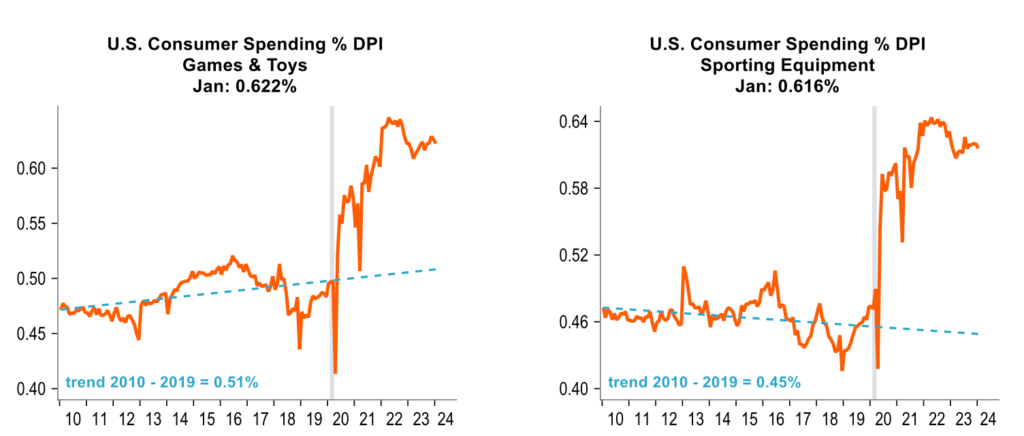
Though games and toys went a bit downhill after the holiday seasons, which was when it was at a peak, sporting goods remain strong, mainly in the e-commerce section.
Sporting goods retailers may have quickly adapted to the changing consumer behavior by enhancing their online presence, offering competitive pricing, and capitalizing on the increased interest in personal fitness equipment and outdoor activities.
Why would more people be interested to purchase sports equipment online? Most probably the discounts and convenience of it delivered right to your doorstep. People would rather pay for minimum shipping charges while shopping from their homes, rather than going through the hassle of walking in store and carrying the bulk of large sports items and bringing it back by themselves. Just food for thought.
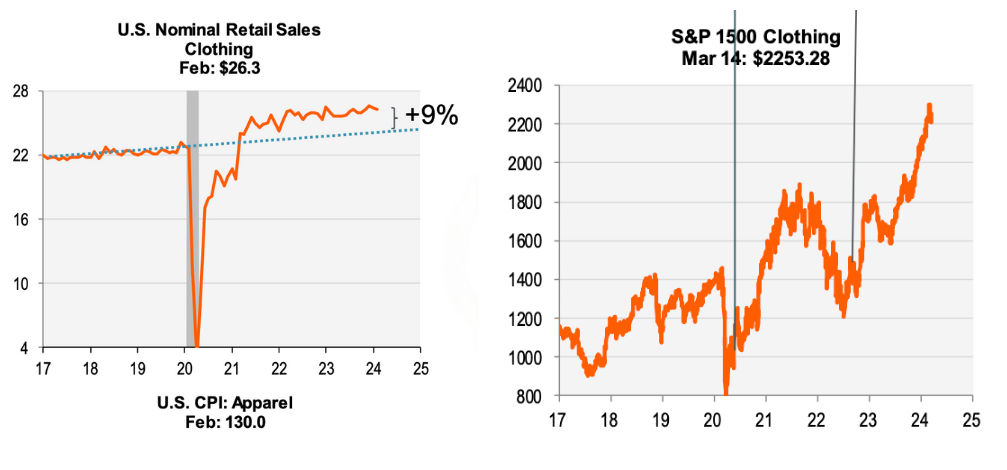
Hear, hear! Apparel spending has showed strong and steady numbers. In late 2023, we saw a recovery in inventory restocking, particularly in casual and fashion apparel, outperforming sports apparel.
Sports apparel, specifically had a good hike and showed nominal growth. This might be due to discounts offered off season. Again, due to winter, not much of sports activities will be done, and it’s usually at this time when stores are clearing inventory, posing a spike towards sports apparel and equipment.
It is also due to the much healthier lifestyle the pandemic has caused to the mass market. Heightened awareness around health and fitness, leading to a continued interest in activities that individuals can do on their own or outdoors, such as cycling, running, and home workouts. Sporting equipment is essential for these activities, as is sports clothing, driving up demand on a notable scale.
As we’ve said in previous reports before, with Ozempic and weight loss products on the rise, this trend can most probably be seen for quite some time in the future. We’ll have to observe and see how this goes.
In essence, it can be seen that while people are being cautious with their money because things are still relatively on the high side, they are still not afraid to spend it. Some are even willing to dip in their savings. The Sahm Rule signals the start of a recession when the unemployment rate increases notably from its lowest point in the previous year. Again, it’s simple math. Employment rate is currently looking good, which means consumer confidence is good, that translates to a healthy economy.
Struggling Lower-End Consumers Put Small Businesses in a Pinch
But of course, there’s always a downside to everything. Amidst these spending patterns, lower-end consumers face increasing pressure due to the high prices of goods, particularly essentials like groceries. This challenge is exacerbated by a cautious consumer sentiment towards spending, driven by the sustained high costs of living. Even essentials items like grocery spending is down because food prices are still so high.
The situation has implications for consumer credit, suggesting difficulties in managing debt, especially for those with lower incomes.
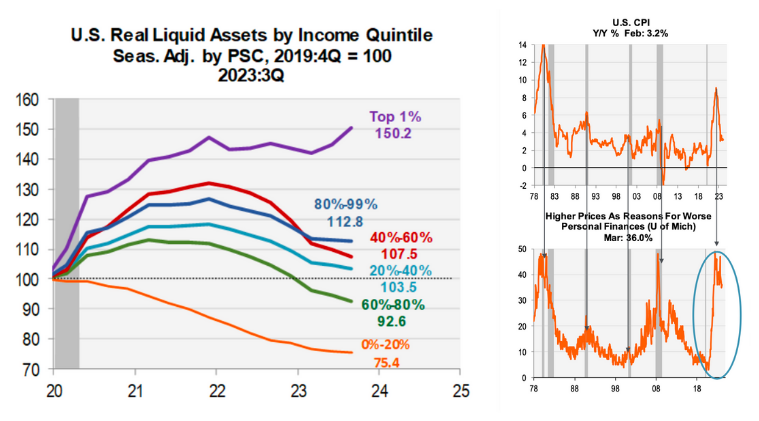
By the looks of it, prices of goods remain stubbornly high, making it harder for people to afford things. However, as mentioned before, people are still spending their money. Why?
- Because they have no choice.
- They know, or strongly believe that they can pay it back.
Its not really inflation or deflation that affects consumers, because this can be adapted to very quickly, but it’s when the prices remain high and never go down, that’s when consumers start to feel uneasy.
With all these being said, it paints a less hopeful picture for small businesses. A survey by the National Federation of Independent Business indicates a significant dip in small business optimism, akin to recessionary levels, which contrasts with the overall economic growth and low unemployment rates.
Imagine the economy is like a big party where everyone’s invited—big companies, small shops, and all of us as guests. Right now, the music’s loud, and the lights are bright, suggesting the party’s going strong. This is like our current economy, where overall, things seem good—people have jobs, and the country’s making money.
But when we zoom in on the small business owners at the party, they’re not dancing; they’re worried, maybe even considering leaving early. They’re feeling the pinch because, despite the booming party, their own cash registers aren’t ringing as much. They have their own set of worries—like paying rent for their shop, buying supplies, or even affording to hire help. These things can be tougher for them than for the big companies with deeper pockets.
So, even though the party seems great on the outside, it looks like small business owners — are not feeling too great. They’re like canaries in a coal mine, hinting that not everything might be as perfect as it seems, and reminding us to pay attention to everyone at the party, not just the ones having the most fun.
“The Sky is Falling! The Sky is Falling!”
However, if we look back at the economic strain circa 2008, where borrowing was bad and consumer confidence was out the window, and it was said to be bad for business everywhere, analysts were screaming “RECESSION, RECESSION!” for years to come, keep in mind that things did not, in fact take turns for the worst.
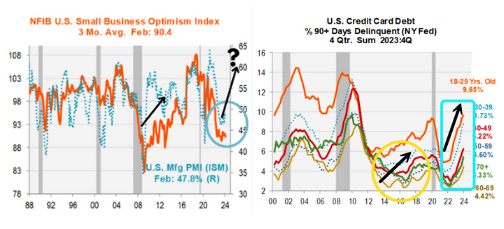
Data from 2015 to 2018 is quite similar to the current data from 2022 to 2024. And look, it did not crash! It went significantly upwards, with no signs of it plummeting down to a market death.
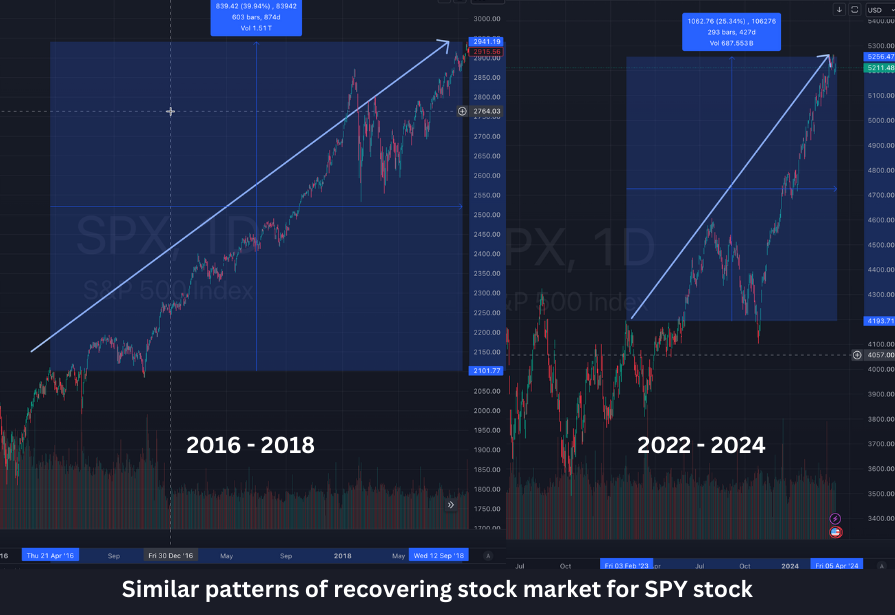
Even the “SPY” stock, which refers to the SPDR S&P 500 ETF Trust, one of the most widely recognized exchange-traded funds (ETFs) in the world, recovered well from 2015 to 2018 after the economic turbulence in precedent years, where once upon a time, fund managers were shouting “the sky is falling” on top of their lungs just like the tale of Chicken Little.
Similarly here we are, in 2024, recovering, stronger and steadier, even after a global pandemic has hit in 2020. So keep your chins up, and move ahead. The economy is not going to crash any time soon. Yes, at a glance, it does look like a lot of people are in a pit of debt, but it also means the consumer is confident and strong. People are taking out loans as they are optimistic and very sturdy with their economic stands. They know their financial ability, and they know they can pay it off.
To Spend or Not To Spend, Now That is the Question
“Whether ’tis nobler in the wallet to suffer The slings and arrows of outrageous fortune, Or to take arms against a sea of debts, And, by opposing, end them.”
Well we’re no Shakespeare, but one thing for sure is that we know it’s as clear as day that now might not be the smartest time to buy a house or a car, or take any additional loans for the matter as sticky inflation will reflect higher interest rates and make borrowing much more expensive.
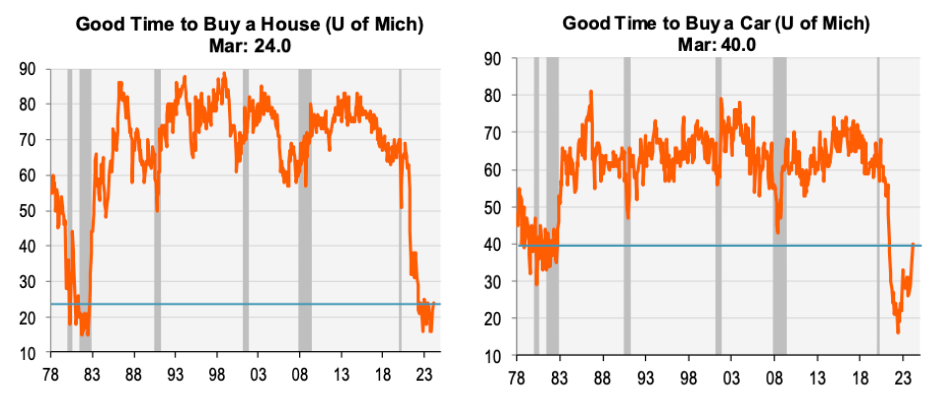
Though economy and consumer confidence is bullish, some reports are saying that people are actually spending more than they earn. If we look at the bright side, sure it means consumer confidence is good as they know money is coming in, but people might need to balance spending and be extra cautious and not take new and big loans.
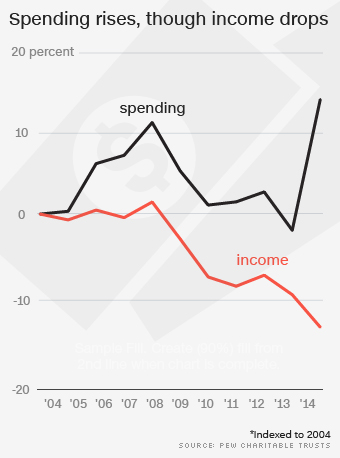
In light of these dynamics, the question arises: Are consumers spending their money wisely? Current trends indicate a need for caution, with evidence suggesting that many are dipping into savings or relying on credit to maintain their spending levels. This approach is not sustainable in the long term and aligns with predictions of a consumer recession, hinting at a forthcoming reduction in spending as personal savings deplete.
But glass half full, as mentioned earlier, it’s only because they know they have money, or at least will have the money because jobs are good.
Reflecting on economic challenges in past years, when borrowing was fraught with difficulty and consumer confidence seemed to vanish, prompting widespread fears of a recession, it’s important to note that the situation didn’t deteriorate as feared. Contrary to the alarms raised by analysts, the economy rebounded vigorously. It’s a reminder to maintain optimism and to keep pushing forward; the economy is far from a downfall.
Moving forward, it will be crucial to monitor these dynamics, as they suggest a complex interplay between inflationary pressures and consumer behavior that could shape the economic landscape in the near term. While it might appear that many are submerged in debt, this also signals a robust confidence among consumers. However, it is still important for consumers leveraging savings or credit, to plan carefully to ensure sustainability and avoid financial overextension. The ongoing economic strength offers opportunities for those who navigate these times thoughtfully, suggesting that a balanced approach to spending and saving could pave the way for financial stability and growth in the face of inflationary challenges.
